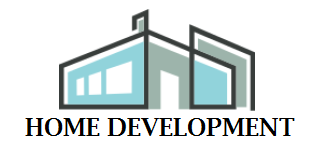Stepping onto the property ladder for the first time can feel daunting, but understanding your mortgage options makes it much easier. Many first-time buyer mortgages are designed to help you get started, often featuring lower deposits and reduced application fees. Did you know some lenders even offer 100% mortgage products, eliminating the need for a deposit altogether?

Choosing the right mortgage is crucial. While fixed-rate mortgages offer stability with predictable monthly payments, tracker and discounted mortgages might save you money over time. Getting expert advice from a broker can help you navigate these choices, ensuring you find the best deal for your needs. Starting this process early gives you a clear idea of your budget, making your home-buying journey smoother and more confident.
Understanding Mortgages for First-Time Buyers
Getting your first mortgage can be daunting. But don’t worry; understanding the basics makes the process much smoother.
What Is a Mortgage?
A mortgage is a loan used to buy property. It’s usually repaid over a long term, like 25 years, and secured against the property. If you can’t repay, the lender can sell your property to recover their money. For first-time buyers, the process might seem complex, but breaking it down helps.
Types of Mortgages Available
Several mortgage types are available, each with its pros and cons.
- Fixed-Rate Mortgages: They offer a stable interest rate for a set period, usually 2, 5, or 10 years. It’s great if you prefer predictable payments.
- Tracker Mortgages: These follow the Bank of England’s base rate. Your repayments go up or down with the base rate. They can be risky if rates rise.
- Discounted Variable Rate Mortgages: They offer a discount on the lender’s standard variable rate (SVR) for an agreed period. Payments fluctuate with the SVR.
- First-Time Buyer Mortgages: Some lenders offer specific products for first-timers. These may include lower deposit requirements and reduced fees.
Key Mortgage Terms Explained
Mortgage jargon can be confusing. Knowing key terms helps you make informed decisions.
- Deposit: The initial sum you pay upfront, usually a percentage of the property price. A higher deposit often gets you better interest rates.
- Interest Rate: The percentage charged on the loan amount. Fixed rates stay the same, while variable rates can change.
- Loan to Value (LTV): The ratio of the loan amount to the property’s value, expressed as a percentage. Lower LTV ratios often mean lower interest rates.
- Repayment Mortgage: You pay both interest and part of the capital each month. By the end of the term, you’ve repaid everything.
- Interest-Only Mortgage: You only pay the interest each month, not the capital. You’ll need a plan to repay the capital at the end of the term, often used for buy-to-let mortgages.
Understanding these basics helps demystify the mortgage process and gives you confidence as you step onto the property ladder.
Preparing for a Mortgage Application
Planning to take that big step of buying your first home? It’s not just about picking the perfect property. Properly preparing for a mortgage application is crucial for first-time buyers. Let’s explore what you need to consider to increase your chances of approval and secure the best deal.
Assessing Your Financial Readiness
Before you even think about applying for a mortgage, you’ve got to assess your financial situation thoroughly. This means knowing your income, understanding your outgoings, and having a realistic idea of what you can afford. Think about your salary, any additional income, and existing debts or financial commitments. Lenders typically lend up to 4 to 4.5 times your salary, but this can vary based on your overall financial health.
Example: If you have a yearly salary of £30,000, you might be able to borrow up to £135,000, provided you have a good credit history and manageable outgoings.
Consider using online tools to calculate what you can afford. Don’t forget to factor in other costs like Stamp Duty, conveyancing fees, and survey costs, which can add up quickly.
Importance of Credit Score
Your credit score is one of the most critical factors in your mortgage application. Lenders use it to gauge your reliability in repaying borrowed money. A higher credit score can increase your chances of mortgage approval and might even get you better interest rates.
Check your credit report in advance to ensure there are no errors. Look for any outstanding debts, payment arrears, or, worse, signs of fraud.
Example: If you’ve missed a few credit card payments in the past, this could negatively impact your score. Paying down existing debt and never missing payments can help improve this over time.
How to Boost Your Deposit
The size of your deposit plays a massive role in determining the type of mortgage you can get. A larger deposit generally means better mortgage rates and terms. Aim to save at least 10% of the property’s value, but if you can save more, that’s even better.
Start by reviewing your monthly budget to find areas where you can save more money. Open a dedicated savings account for your deposit to avoid dipping into it for other expenses. Investigate government schemes that might also help boost your deposit.
Example: If you’re looking at a property worth £200,000, aim for a deposit of at least £20,000, but more will improve your mortgage options significantly.
By focusing on these areas, you’ll stand a much better chance of successfully navigating the first time buyer mortgage guide.
The Mortgage Application Process
Navigating the mortgage application process can seem daunting, but breaking it down into manageable steps makes it more approachable. You’re almost there, and understanding each stage will help ease the stress.
Steps to Apply for a Mortgage
- Assess Financial Readiness
Start by evaluating your financial situation. Download your credit report and review it carefully. Check for errors and make sure everything is correct. Pay off outstanding debts if you can, as a healthier credit score increases your chances of approval and better rates. - Gather Necessary Documents
Mortgage lenders need proof of income, employment, and identity. Collect pay slips, tax returns, bank statements, and ID documents. Organising these in advance will save you time and hassle later. - Get a Mortgage Agreement in Principle (AIP)
An AIP shows how much a lender might let you borrow. It’s not a guarantee, but it gives you a good starting point. Having an AIP can also make you more attractive to sellers. - Submit Your Application
With your documents ready and an AIP in hand, submit your full mortgage application. Double-check everything to avoid common mistakes. It’s essential to be accurate, as any discrepancies can delay the process or even result in a rejection.
Choosing Between Broker or Direct Application
Deciding whether to go through a broker or directly to a lender depends on your circumstances. A mortgage broker can sometimes find deals you won’t get on your own. They handle the paperwork, navigate complex products and have access to a range of lenders, including those that specialise in helping applicants with complex credit histories.
But if you’re confident in your ability to find the best deal and your situation is straightforward, applying directly can save you broker fees. Direct applications might be simpler and quicker if you already know what you want.
- Missing Documents
Not having the right documents ready can cause frustrating delays. Make a checklist and tick off items as you gather them. If a lender needs additional information, provide it promptly. - Inaccurate Information
Inaccuracies in your application can lead to rejections. Triple-check every detail before submitting. Ensure that all figures match your documents exactly. - Big Financial Changes
Avoid making significant financial changes, like switching jobs or taking out new loans, during the application process. Stability is crucial. Lenders want to see a steady financial situation.
Understanding each step and avoiding common pitfalls increases your chances of securing the mortgage you need. By taking a prepared and cautious approach, you’ll make the process smoother and less stressful.
Additional Costs of Purchasing Your First Home
Buying your first home is a huge milestone, but it comes with extra costs you might not have considered. Understanding these can help you plan better and avoid surprises down the line.
Survey and Valuation Fees
Before buying, you need to ensure the property’s worth what you intend to pay. This involves a mortgage valuation and potentially a more detailed survey. A basic mortgage valuation usually costs between £150 and £1,500, depending on property value. Though it’s basic, it helps lenders confirm the property’s worth. If you’re worried about existing or hidden issues, a Homebuyer Report or a full building survey might be better. These can cost around £250 to £600 for a Homebuyer Report and upwards of £600 for a full building survey. It’s more, but it could save you from costly repairs later.
Legal Fees and Conveyancing
Conveyancing is the legal process of transferring property ownership. You’ll need a solicitor or a licensed conveyancer to handle this. Fees usually range from £800 to £1,500, depending on the property and complexity. This often includes charges for searches, like local authority searches, which check for planning proposals or restrictions. Remember, your conveyancer handles contracts, advises on legal matters, and ensures the transaction complies with the law. It’s tempting to go for the cheapest option, but experienced professionals can save you headaches and money in the long run.
Stamp Duty and Other Taxes
Stamp Duty Land Tax (SDLT) is a significant cost in England, applicable when buying a property over £125,000. First-time buyers get some relief; properties up to £300,000 are stamp duty-free. If your home’s between £300,000 and £500,000, you’ll pay 5% on the amount over £300,000. In Scotland, there’s the Land and Buildings Transaction Tax (LBTT), and in Wales, it’s the Land Transaction Tax (LTT). These taxes vary, so check the latest rates and thresholds. It’s worth budgeting for SDLT or similar, as it’s often a final hurdle in the buying process.
Planning for these extra costs ensures a smoother home-buying experience. Anticipate them and budget accordingly to avoid financial stress and enjoy your new home with peace of mind.
Government Schemes and Supports
Government schemes can make a world of difference for first-time buyers. They help ease the financial burden, making that dream of owning a home more achievable without needing a hefty deposit. Here’s a rundown of the key schemes available.
Help to Buy and Shared Ownership
Help to Buy remains a popular choice. Under this scheme, you can borrow up to 20% of the property value (40% in London) from the government, adding onto your 5% deposit. This loan is interest-free for the first five years, making it easier to manage your finances when starting out. However, bear in mind that the property must be a new build and cannot be more than £600,000.
Shared Ownership is another option worth considering. This scheme allows you to buy a share of your home – typically between 25% and 75% – and pay rent on the rest. Over time, you can purchase additional shares until you own the property outright. It’s a great way to get onto the property ladder with a smaller deposit.
First Homes Scheme
The First Homes Scheme, launched in June 2021, offers newly built homes at a discount of at least 30% compared to the market value. This scheme prioritises local first-time buyers and key workers, aiming to support those who need it most. The discount remains tied to the property even if it’s sold in the future, ensuring that it benefits future first-time buyers too.
Limited availability and regional restrictions can be a constraint, so check if there are properties available in your desired area.
Mortgage Guarantee Scheme
Introduced in April 2021, the Mortgage Guarantee Scheme encourages lenders to offer 95% mortgages. This means you only need a 5% deposit to buy a property. Although you don’t apply for this scheme directly, many lenders’ 95% mortgages are part of it. It can be a viable route if you’re struggling to save a larger deposit.
Other Available Schemes
While Help to Buy winds down, Deposit Unlock has emerged as an alternative. Developed by the House Building Federation, this scheme allows you to purchase a new build home with just a 5% deposit. It’s particularly helpful if you’re keen on buying newly constructed properties.
Considering all these options, do note that securing a mortgage isn’t the only hurdle. Be prepared for additional costs like legal fees, survey fees, and perhaps unexpected financial commitments. If you’re combining these schemes with unsecured business loans to fund other expenses, ensure you’ve got a solid repayment plan in place. Every bit of planning helps smooth your journey to homeownership.
Conclusion
Navigating the world of first-time buyer mortgages can seem daunting but with the right knowledge and preparation you can make informed decisions that suit your financial situation. Exploring government schemes like Help to Buy and Shared Ownership can significantly ease your path to homeownership. Always consider additional costs and regional restrictions to avoid unexpected surprises. By planning carefully and ensuring you have a solid repayment strategy you’ll be well on your way to securing your first home. Remember thorough research and professional advice can make all the difference in your home-buying journey.





